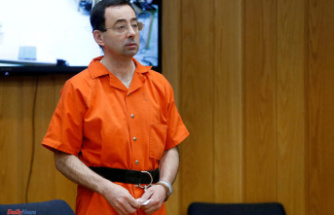nobody ever comes in Here, is not entitled to do so. The treasure chamber is secured. However, even if an intruder were to succeed, to overcome the backup, he shied away from, presumably, in front of the scary name of that room behind the heavy door: bone floor. Bones bearings are actually in great number. However, they do not come from man, but from a much older species. Here, in a secluded area of the Hessian state Museum in Darmstadt, objects are kept, the many millions of years in the history of the earth, and are of inestimable value, because they are geologists, paleontologists, and mineralogists to determine the condition of the animal and plant world from time immemorial can give.
Christian Riethmüller
editor in the Rhein-Main-Zeitung.
F. A. Z.There, on the desks, special cabinets and shelves full of bones, fossils and minerals sent to the ground, heads of the Kingdom by Oliver Sandrock, Torsten Wappler, and Gabriele Gruber, the curators and Department in the Natural science collections of the national Museum. Here you go researching, cataloguing and archiving of the huge, still-growing population. In the exhibition rooms of the Museum of all of this, only a section is visible, however, one that contributes to the glory of the counting of the few universal museums in Europe, the house, are, however, about the spectacular fossils from the Messel pit, including the famous Urpferd to the magnet visit.
Many treasure pieces
the origins of The geological collection of the state Museum in the late 18th century. A century back. In the eighties, the Councilor of the Johann Heinrich Merck (1741-1791) nature alien to a collection had been brought together, which was purchased in 1792 from his estate by the then Landgrave Ludwig X. of Hesse-Darmstadt (1753 to 1830), later Grand Duke Ludewig I of Hesse and by Rhine, for a Cabinet of natural history. The Cabinet should be part of a yet to be constructed public Museum, for the Ludwig in the following years, other collections, purchase or recruiting allowed.
the collection of Hüpsch, which could be taken in the year 1805 was. The extensive collection had been built by the Cologne-based scientists and naturalists Guillaume Adolphe Fiacre Honvlez, Baron von Hüpsch (1730 to 1805), in the Tradition of the enlightenment, a hodgepodge "of all the oddities of all times and countries", he bequeathed with his death, the Landgrave of Hesse-Darmstadt. In addition to all sorts of trinkets, the collection was Hüpsch many treasure pieces, among them also some exceptional minerals, the collections together, was with some of the other at that time to Darmstadt came minerals the Foundation for a well-respected collection. It was however set up only in 1995, the "jewel in the sparkling crown", the state Museum was able to purchase the collection of Paul Ruppenthal. This collection had built up the long-time chief of Idar-Oberstein precious stone company, which had taken not only the rarity of the exhibits, but also on their aesthetic appeal. In a large Vitrine issued, belong to these nature-made works of art – Pyrite, Calcite, tourmalines to the optical highlights in the permanent exhibition of the Museum.
Date Of Update: 01 August 2020, 17:19











